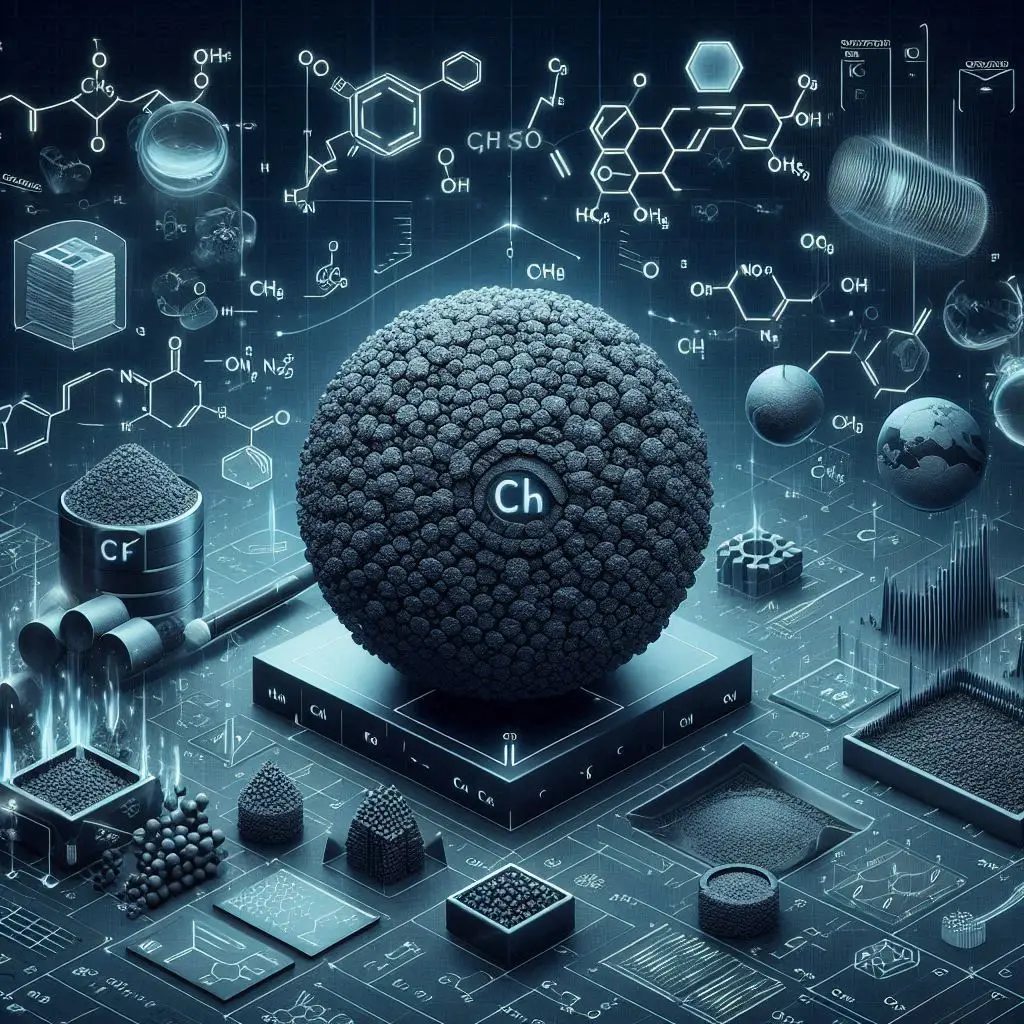
Carbon Black Chemical Formula, Structure & Composition 2025
Short Intro:
Carbon black is a key industrial material with versatile applications, from rubber reinforcement to pigments and catalysts. Its chemical formula and structure define its performance and value.
What You’ll Learn:
- Fundamental chemistry and formula of carbon black
- Structural characteristics and industrial uses
- Composition and impurity insights
- Manufacturing processes and particle properties
- Applications in rubber, pigments, and environmental protection
- Market outlook from NovinTrades
1) Introduction to Carbon Black Chemistry
Introduction to Carbon Black Chemistry
Carbon black is a finely divided form of elemental carbon produced by the incomplete combustion or thermal decomposition of hydrocarbons. Its primary chemical formula is represented as C, highlighting its composition as pure carbon. Its versatility across industries—from rubber and inks to electronics and environmental catalysts—makes it a critical material for modern technology and sustainability.
Carbon black’s unique physical and chemical properties result from its high surface area, porous structure, and sp2 hybridized carbon sheets. This article explores its chemical formula, structure, composition, manufacturing processes, and industrial applications, providing a comprehensive guide for professionals and researchers.
2) Carbon Black Chemical Formula
Carbon Black Chemical Formula
SEO Snippet: Carbon black’s chemical formula is C, consisting mainly of elemental carbon with trace impurities.
Carbon black is primarily composed of elemental carbon, denoted by the formula C, with trace amounts of nitrogen, oxygen, sulfur, and hydrogen as impurities. Its properties, including conductivity, UV resistance, and mechanical reinforcement, depend on particle size, surface area, and production method.
Section Summary: The carbon black chemical formula emphasizes its pure carbon nature, influencing its applications in inks, rubber, and catalysts. Hydrocarbon pyrolysis creates particles of varying structure and size, resulting in multiple grades suited to industrial needs.
LSI Keywords: elemental carbon, amorphous carbon, hydrocarbon pyrolysis, black pigment, rubber reinforcement, UV stability, conductive additive
External Links:
- ScienceDirect: Carbon Black Applications
- ResearchGate: Carbon Black Chemistry
NovinTrades Market View: The market for carbon black remains strong, driven by rising demand in tire production, electronics, and coatings. Innovations in nanoparticle carbon black are forecast to enhance functional applications in 2025.
3) Carbon Black Chemistry Formula
Carbon Black Chemistry Formula
SEO Snippet: The chemistry of carbon black involves sp2 hybridized carbon sheets forming amorphous, high-surface-area particles.
The carbon black chemistry formula explains its molecular arrangement and synthesis. Hydrocarbons like coal tar, heavy oil, and natural gas undergo pyrolysis in controlled conditions, forming clusters that aggregate into primary carbon black particles. These particles consist of interconnected carbon sheets via sp2 hybridization, creating a porous, amorphous network.
Section Summary: Carbon black’s chemistry defines its structural disorder and adsorption capacity. Particle size, surface area, and porosity vary with feedstock and production conditions, impacting its effectiveness in rubber reinforcement, pigments, and catalysis.
LSI Keywords: sp2 hybridization, amorphous carbon, pyrolysis, particle aggregation, surface area, adsorption, polymer reinforcement
External Links:
- ScienceDirect: Carbon Nanostructures
4) Carbon Black Chemical Composition
Carbon Black Chemical Composition
SEO Snippet: Carbon black is over 95% elemental carbon with trace nitrogen, sulfur, oxygen, and hydrogen impurities.
Carbon black is largely elemental carbon, with concentrations often above 95%. Minor impurities such as nitrogen, sulfur, oxygen, and hydrogen are influenced by feedstock and production techniques. Its composition, along with particle size and porosity, determines its suitability for applications in rubber reinforcement, inks, coatings, and gas purification.
Section Summary: The chemical composition of carbon black directly affects its performance as a reinforcing filler, pigment, and adsorbent. High carbon content ensures optimal strength and durability, while trace elements contribute to surface chemistry and catalytic properties.
LSI Keywords: elemental carbon content, carbon impurities, hydrocarbon feedstock, particle size, porosity, adsorption capacity, polymer composites
External Links:
- American Chemistry Council: Carbon Black Safety
NovinTrades Market View: Carbon black grades with higher surface area and purity are increasingly preferred for specialized applications, including high-performance tires and electronic devices.
5) Carbon Black Structure Formula
Carbon Black Structure Formula
SEO Snippet: Carbon black features a disordered, amorphous structure with high porosity and sp2-linked carbon sheets.
The structure of carbon black consists of amorphous, interconnected carbon sheets formed through sp2 hybridization. Unlike crystalline forms like graphene, carbon black exhibits random aggregation, creating high surface area and porosity. This structure underpins its functionality in adsorption, pigmenting, catalysis, and rubber reinforcement.
Section Summary: Carbon black’s unique structure, composed of primary particles forming larger aggregates, defines its mechanical and chemical performance. Its porous, high-surface-area morphology enhances durability in rubber, light absorption in pigments, and efficiency in catalyst support.
LSI Keywords: amorphous carbon structure, particle aggregation, porosity, adsorbent properties, sp2 carbon sheets, black pigment, rubber compounding
External Links:
NovinTrades Market View: Advanced structural analysis of carbon black enables manufacturers to tailor particle morphology, improving performance in tire reinforcement and conductive applications.
6) Conclusion: Carbon Black Chemistry & Structure
Conclusion: Carbon Black Chemistry & Structure
SEO Snippet: Carbon black’s formula, composition, and structure make it essential for rubber, inks, coatings, and catalytic applications.
Carbon black, with its chemical formula C, high carbon content, and sp2-based amorphous structure, is a cornerstone industrial material. Its versatility spans rubber reinforcement, pigments, catalysts, and gas purification. Advanced production techniques optimize particle size, surface area, and porosity to meet diverse industrial demands.
Section Summary: Understanding carbon black’s chemical formula, composition, and structure is critical for leveraging its properties in industrial and environmental applications. Its high carbon purity, amorphous network, and adsorption capabilities ensure long-term value in multiple sectors.
LSI Keywords: chemical formula C, elemental carbon, amorphous structure, rubber filler, black pigment, catalyst support, industrial applications
External Links:
Readers are invited to explore more detailed insights and analyses in NovinTrades’ Reportage section.
About NovinTrades
As part of its mission, NovinTrades offers a dedicated Reportage section where businesses, brands, and professionals can publish in-depth sponsored articles, analyses, and thought-leadership pieces. These reportages are SEO-optimized for maximum visibility and long-term engagement.
📍 Explore more at NovinTrades Reportages
📣 Join us on Telegram: https://t.me/novintrades

